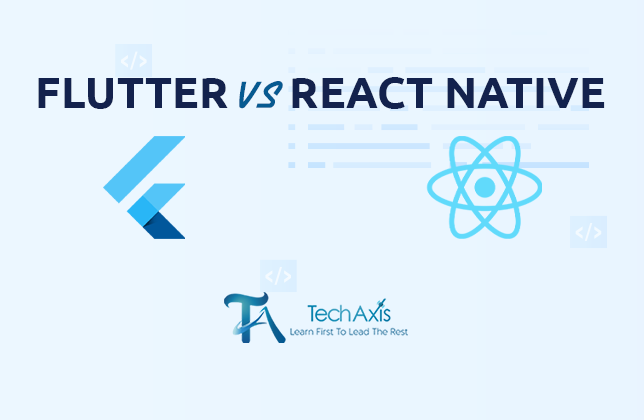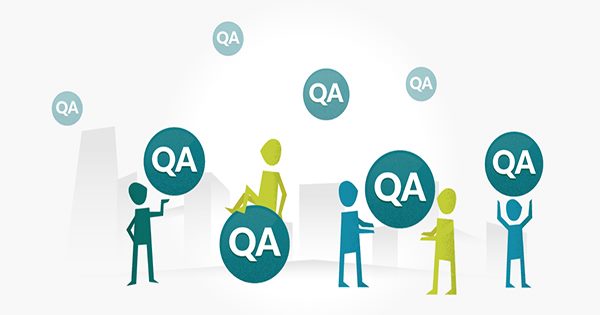
Flutter Vs. React Native: Difficulty, Performance, Scope, UI, Popularity, Support
Mobile app development is continuously growing, and with the increasing demand for mobile apps in the modern world, app developers are now looking for new solutions for app development that are less time and effort-consuming. Flutter and React Native are two popular frameworks for mobile application development for modern cross-platform (Android and iOS). But which one is better? Flutter or React Native? Let’s find out.
What is Flutter?
Flutter is an interface-building Google UI framework that is used to build and deploy visually attractive and natively-compiled applications for mobile (iOS & Android), web, and desktop. It uses a single codebase to create applications, so there is no need for separate apps for the web, mobile, and desktop. Flutter uses the Dart programming language to create hardware-optimized apps for the ARM architecture. Flutter applications include Insight Timer, Stadia, Reflectly, and Google Ads.
Advantages of Flutter Framework
There are many reasons to choose Flutter over React Native. Here are the top 5 reasons why Flutter is better than React Native.
- Faster Development and Deployment
Flutter comes with many built-in features such as “hot reload” which results in the faster development and deployment of applications. Flutter compiles the code faster and displays the preview of an app before the project is completed after minor code changes.
- Quality Documentation
Quality Documentation is essential for open-source projects. The Flutter.dev in the Flutter allows building projects without any prior Flutter experience. When some information or tools are missing, Flutter itself closes the gap and fixes the problem.
- Feature-Rich User Interfaces
Flutter features rich and customizable user interfaces. The interfaces can be customized down to the last pixel. You can produce highly detailed UI components, which can also be animated, in Flutter without sacrificing the rendering speed.
- Compatibility With Older Devices
With Flutter, we can create applications that are compatible with older devices. Apps made on Flutter give perfect functionality on Android versions from 5.1.1 and iOS versions from 8.
- Flutter UI is Separated From Native UI
When native visual components fail to display completely, Flutter ensures the application has an error-free performance on all supported platforms.
Disadvantages of Flutter Framework
The powerful features of Flutter we listed above do not necessarily make the Dart-based framework the winner in the Flutter vs. React Native contest. Along with the advantages, you will encounter certain disadvantages as well while working on Flutter. Take a look on the disadvantages of Flutter below.
- Framework Age
As Dart and Flutter are new to the tech industry, it becomes difficult for app developers to come up with a vast variety of use cases. A big team is needed to develop highly complex or niche projects via Flutter.
- Dynamic Evolution
Dynamic evolution is not actually a downside of the framework but is a challenge. Frequent changes to the development environment may lead the applications to behave differently: sometimes in undesired ways.
- Project size
Project files in the Flutter framework occupy more space as compared to React Native, which is a big disadvantage of Flutter.
What is React Native?
React Native is a Facebook UI open-source mobile application framework based on React.JS programming language. Like Flutter, React Native also uses one codebase in application development for mobile (iOS & Android), web, and desktop. React Native applications include Facebook, Instagram, Pinterest, and Tesla.
Advantages of React Native Framework
Below are listed the top 6 advantages of React Native.
- Platform-Specific Native Components
React Native is pretty different - in a positive manner - from other JS-based frameworks. If you compare React Native and Angular.JS, the Native imports platform-specific native components while Angular.JS ignores them.
- Web and ReactXP Libraries
React Native comes with Web and ReactXP libraries which makes it easier to launch a web version of a given app.
- Popularity
App developers have been using JavaScrip for years, and the thing that React Native is based on JavaScript has made this framework more popular.
- Hot/Live Reload
React Native features a Hot/Live reload that allows the app developers to see the changes without the project rebuild.
- CodePush
React Native features an App Center cloud service that allows app developers to deploy mobile app updates directly to the devices of end-users.
Disadvantages of React Native Framework
Although React Native is a cross-platform for app development, it’s not perfect in doing so. Check out the disadvantages of React Native below.
- Poor Documentation
Although the React Native framework features a single, central base of knowledge, just like Flutter, it has poor documentation than the Flutter framework.
- Lack of Functionality in Connectible Native Libraries
Some connectible Native libraries in React Native don’t fit to implement the functionality of a project. Some components may even need to be tweaked or discarded and need to be written from scratch in React Native.
- Only Partial Independence
Although React Native is a cross-platform framework, it becomes pretty difficult within the paradigm of app development. React Native acknowledges different platforms, so you need to rely on the expertise of a native developer.
Flutter vs React Native: Which is Best?
Flutter and React Native share the same general features and these two frameworks occupy the same niche in app development. Both frameworks are mobile cross-platform with an option to re-use the code later. How are Flutter and React Native different, though? The table below showcases key differences between Flutter and React Native.
|
Concept |
Flutter |
React Native |
|
Develop By |
|
|
|
Release |
May 2017 |
June 2015 |
|
Programming Language |
Dart |
JavaScript |
|
Architecture |
Uses Business Logic Component (BLoC) architecture. |
Uses Flux and Redux architecture. |
|
User Interface |
Uses custom widgets to build the UI of the app. |
Uses native UI controllers to create the UI of the app. |
|
Documentation |
Flutter documentation is good, organized, and informative. |
React native documentation is disorganized. |
|
Performance |
The performance of applications made on Flutter is fast. |
The performance of applications made on React Native is slow as compared to Flutter. |
|
Community Support |
Flutter has less community support than React Native. |
React Native has very strong community support where issues can be solved quickly. |
|
Testing |
Feature in Flutter allows the app developer to perform unit testing, integration testing, and widget testing. |
React Native uses third-party tools for testing the application. |
|
Popularity |
81200 stars on GitHub, as per December 2019 |
83200 stars on GitHub, as per December 2019 |
Flutter and React Native, both are great choices for the development of cross-platform applications. Despite having a lot of similarities, you should be aware of some key differences before choosing one for app development.
No matter what framework you choose for app development, you need to know how it works and how can you create an interactive application using Flutter and React Native. For that, you may need to join an IT course in Nepal. Tech Axis offers all types of IT courses in Nepal including the React Native Training in Nepal, Flutter Training. Tech Axis is the best IT institute in Nepal to provide the best IT training in Nepal.











